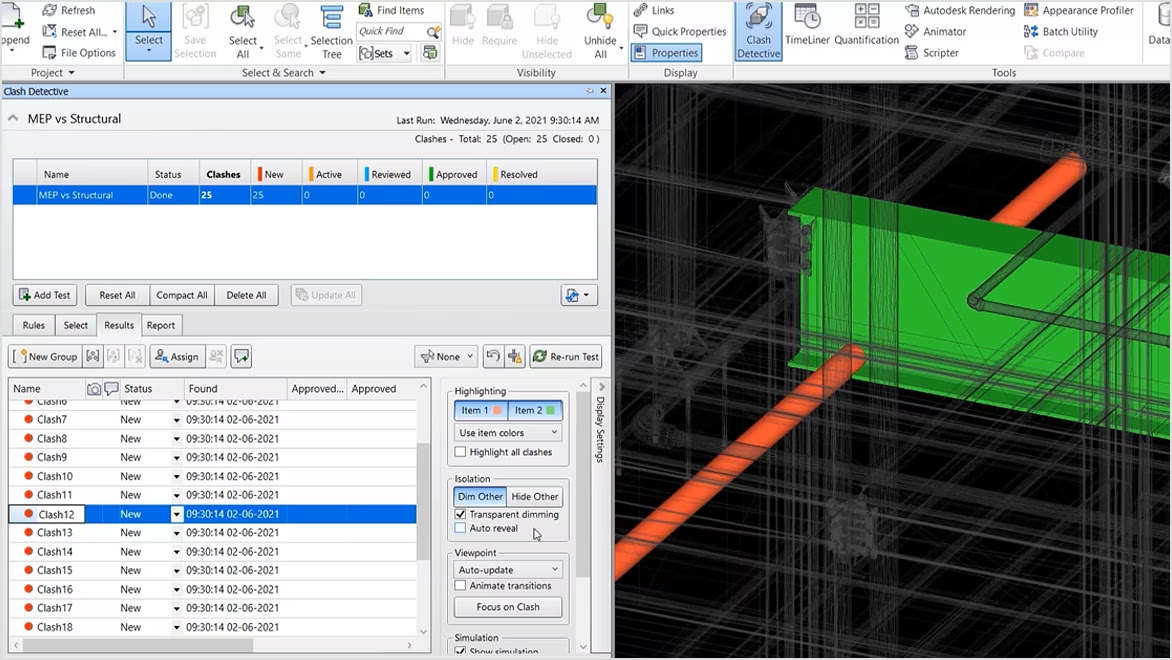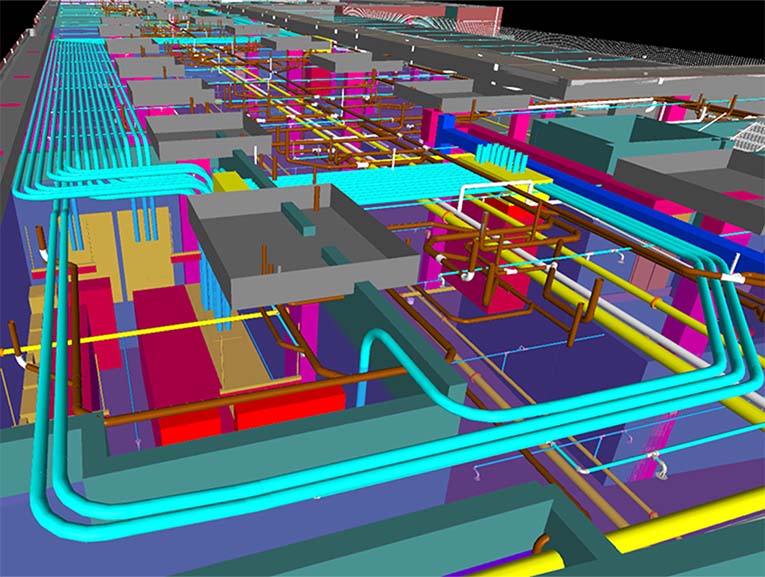
The construction industry is rapidly shifting from traditional methods to Building Information Modeling (BIM), transforming how buildings are designed, built, and maintained. Electrical technicians, once reliant on 2D drawings and manual processes, now face the challenge of adapting to BIM-driven workflows. This transition is driven by the need for greater efficiency, improved collaboration, and advanced project management. As BIM adoption grows, professional BIM technicians with expertise are securing higher salaries and faster career growth.
What is BIM?
Building Information Modeling (BIM) is changing the way buildings are designed, built, and managed. It’s more than just 3D modeling, it’s a smarter way to bring projects to life. Instead of relying on traditional drawings, BIM creates intelligent digital models packed with real-time data about every part of a building. With BIM, architects, engineers, and construction teams can collaborate better, reduce errors, and keep projects on track. It streamlines everything from planning and design to construction and maintenance, making the entire process more efficient.
Why Is There a Shift from Traditional Technician to BIM?
The Architecture, Engineering, and Construction (AEC) industries are undergoing a major transformation, moving away from traditional technical workflows and embracing Building Information Modeling (BIM). This shift is driven by the need for greater efficiency, improved collaboration, and enhanced project management. BIM technology offers a data-driven approach that replaces outdated, fragmented processes with a seamless, intelligent workflow that integrates all aspects of a project.

1. Increased Efficiency and Accuracy
Traditional technicians rely on 2D drawings and manual drafting, which often leads to errors, inconsistencies, and inefficiencies. BIM, on the other hand, allows for the creation of intelligent 3D models that automatically update changes across all project aspects.
2. Enhanced Collaboration and Communication
Traditional workflows involve separate teams working in silos, leading to miscommunication and project delays. BIM fosters collaboration by providing a shared digital environment where architects, engineers, and construction teams can access real-time project data.
3. Better Visualization and Simulation
Traditional drafting methods limit the ability to visualize complex structures before construction begins. BIM allows teams to create highly detailed 3D models, conduct simulations, and analyze different design scenarios.
4. Cost and Time Savings
Traditional construction methods often suffer from cost overruns and project delays due to design conflicts, rework, and material waste. BIM helps prevent these issues by enabling early detection of design clashes, optimizing material usage, and streamlining scheduling.
5. Integration with Advanced Technologies
BIM seamlessly integrates with cutting-edge technologies such as artificial intelligence (AI), virtual reality (VR), and augmented reality (AR), allowing for innovative project management solutions.
6. Standardization and Compliance
The construction industry is increasingly adopting global standards like ISO 19650, which emphasize digital workflows and data management. BIM ensures compliance with these standards, providing a structured framework for project execution and documentation.
7. Lifecycle Management and Sustainability
BIM goes beyond design and construction, it supports the entire lifecycle of a building, from initial planning to facility management. BIM enables sustainable construction practices by optimizing energy efficiency, reducing material waste, and improving long-term building performance.
What Challenges do Electrical Technicians Face in the BIM Era?
Electrical technicians face a variety of challenges as they adapt to the Building Information Modeling (BIM) environment. These challenges range from technical complexities to organizational and communication barriers. Understanding these challenges is crucial for developing effective solutions and ensuring a smooth transition to BIM-based workflows.
1. Coordination Complication
One of the significant challenges electrical technicians encounter is coordinating their work with other disciplines, such as architecture and mechanical engineering. Without BIM, traditional 2D drawings often lead to misalignments and clashes between electrical systems and architectural elements.
2. Costly Rework and Error Prevention
Electrical technicians often face costly rework due to errors in electrical designs. These mistakes, such as inaccurate placements of electrical components or cabling, can lead to substantial expenses.
3. Navigating Project Complexity
Electrical contractors must bridge the gap between engineering designs and practical installation. This involves dealing with contract documents that often lack detailed specifications necessary for on-site execution.
4. Keeping Up with Technology Demands
The rapid evolution of BIM technology demands continuous learning and adaptation from electrical technicians. They must stay updated with the latest software and methodologies to remain competitive. This includes proficiency in tools like Autodesk Revit and understanding how to integrate electrical systems into comprehensive BIM models.
5. Overcoming Content Gaps
Electrical technicians often encounter content gaps in BIM software, particularly in handling complex electrical components like cables. Current solutions may require the use of specialized software or workarounds, such as using piping features for cable routing in Revit.
6. Resolving Communication Fragmentation
Effective communication among stakeholders is crucial for successful BIM implementation. However, electrical technicians may face challenges in coordinating with architects, engineers, and contractors due to differences in workflows and expectations.
7. Lack of Standardization and Training
The AEC industry lacks standardized mandates for BIM, and many educational programs do not include BIM training. This results in a shortage of trained professionals who can effectively integrate electrical systems into BIM models.
8. Aligning BIM with Functional Priorities
Electrical engineers need BIM tools that align with their functional priorities, such as inxategrating diagrammatic layouts, calculations, and 3D models. Current BIM software often falls short of meeting these specific needs, requiring additional tools or custom solutions.
9. Managing BIM Changes During Project Execution
Electrical contractors face challenges when managing BIM changes during project execution. This involves adapting to updates in the model and ensuring that these changes are accurately reflected in the electrical systems.
10. Expectations from Electrical Product Manufacturers
Installers often lack clear expectations from electrical product manufacturers regarding BIM implementation. This lack of clarity can hinder the adoption of BIM in electrical installations, as installers may not fully understand how to integrate products into BIM models
How BIM Technicians Can Command Higher Salaries and Faster Career Growth in 2025?
The role of BIM technicians has become increasingly pivotal in the architecture, engineering, and construction (AEC) industry. As companies continue to adopt Building Information Modeling (BIM) for its efficiency and accuracy, the demand for skilled BIM professionals has skyrocketed.

1. Higher Salaries
BIM technicians generally earn higher salaries compared to their non-BIM counterparts. This is due to the specialized skills required to manage and integrate complex building systems into a unified digital model. The ability to analyze and optimize building designs using BIM tools makes these professionals invaluable to construction projects, leading to better compensation packages.
2. Faster Career Growth
Proficiency in BIM opens doors to leadership roles and specialized positions, such as BIM coordinators or managers. As the industry continues to evolve, BIM technicians are well-positioned to take on more responsibilities and advance their careers rapidly.
3. Industry Recognition
The AEC industry recognizes the value of BIM technicians in enhancing project efficiency and reducing costs. This recognition translates into opportunities for career advancement, as companies seek to leverage BIM expertise to stay competitive. By investing in BIM skills, technicians can position themselves for success in a rapidly evolving industry.
Top 4 BIM Technician Job Description And Advantages
BIM electrical modellers play a crucial role in creating detailed digital models of electrical systems. Their work involves ensuring that these systems are accurately represented and integrated into the overall project model. The advantages of this role include:
1. Precision and Accuracy
BIM electrical modellers use software to create precise models that help identify potential issues before construction begins. This precision reduces errors and costly rework, leading to more efficient project execution.
2. Collaboration Opportunities
Working closely with architects, engineers, and contractors, BIM electrical modellers contribute to a more cohesive project team. This collaboration enhances communication and ensures that electrical systems align with other building components.
3. Innovative Problem-Solving
By using BIM tools, electrical modellers can simulate different scenarios and optimize electrical system designs for better performance and efficiency. This capability allows them to innovate and improve project outcomes continuously.
4. Career Opportunities
The demand for skilled BIM electrical modelers is high, offering a clear path for career advancement. As the industry continues to adopt BIM, these professionals are in a prime position to take on leadership roles or transition into specialized fields.
Essential BIM Skills and Training Required for a Smooth Transition
To transition smoothly into BIM roles, electrical technicians need to acquire specific skills and training. Key areas include:
1. BIM Software Proficiency
Familiarity with BIM software such as Autodesk Revit, ArchiCAD, or Tekla Structures is essential for creating and managing BIM models. Understanding how to use these tools effectively is critical for integrating electrical systems into comprehensive models.
2. Collaboration and Communication
Understanding how to work effectively with multidisciplinary teams is crucial for successful BIM implementation. This includes developing strong communication skills to ensure seamless coordination among stakeholders.
3. Data Management
Knowing how to manage and integrate data from various sources into a unified model is vital for maintaining model integrity. This involves understanding data formats and how to ensure consistency across different systems.
4. Continuous Learning
The BIM field is rapidly evolving, so ongoing education and training are necessary to stay updated with the latest technologies and best practices. This includes attending workshops, seminars, and online courses to enhance BIM skills.
Novatr Course for Electrical Technicians: Software & Skills for Career Advancement
Novatr's BIM Professional Program for MEP Engineers is designed to equip electrical technicians with the skills necessary for career advancement in the architecture, engineering, and construction (AEC) industry. This comprehensive course focuses on hands-on training with leading BIM software like Autodesk Revit and Navisworks, ensuring that participants can effectively integrate electrical systems into comprehensive digital models.
Key Features of the Course
- Industry-Relevant Software: Training in tools such as Revit MEP course and Navisworks to enhance proficiency in BIM modeling and management.
- Practical Experience: Real-world case studies and projects provide practical experience, preparing learners for actual industry scenarios.
- Placement Assistance: Novatr offers dedicated placement support to help participants secure roles in top construction companies.
- Expert Mentors: Guidance from experienced industry practitioners ensures learners receive valuable insights and practical knowledge.
- Flexible Learning: The course is structured to accommodate working professionals, allowing them to balance work and study effectively.
Career Advancement Opportunities
By enrolling in Novatr's BIM course, electrical technicians can position themselves for higher salaries and faster career growth. The program prepares learners for leadership roles and specialized positions, such as BIM coordinators or managers, enhancing their career prospects in the AEC industry.
Conclusion
Building Information Modeling (BIM) is transforming the construction industry, offering electrical technicians higher salaries and faster career growth. Novatr's BIM Professional Program for MEP Engineers provides comprehensive training in leading software like Autodesk Revit, equipping learners with skills to excel in BIM roles. Novatr's Resource Page offers insights into the latest trends and tools. By enrolling in Novatr's program, professionals can secure high-paying roles and stay ahead in the AEC industry.
FAQs
Q) What is a bim technician or electrical modeler?
A BIM Electrical Modeler creates and manages 3D digital models of electrical systems in buildings, ensuring accurate design, coordination, and integration with other disciplines.
Q) What is the difference between a BIM Modeler and a BIM Technician?
A BIM Modeler focuses on creating and modifying 3D models, while a BIM Technician handles data management, coordination, and ensures compliance with BIM standards.
Q) Do Electrical Engineers Use BIM?
Yes, electrical engineers use BIM to design, analyze, and coordinate electrical systems efficiently, reducing errors and improving project planning.
Was this content helpful to you







